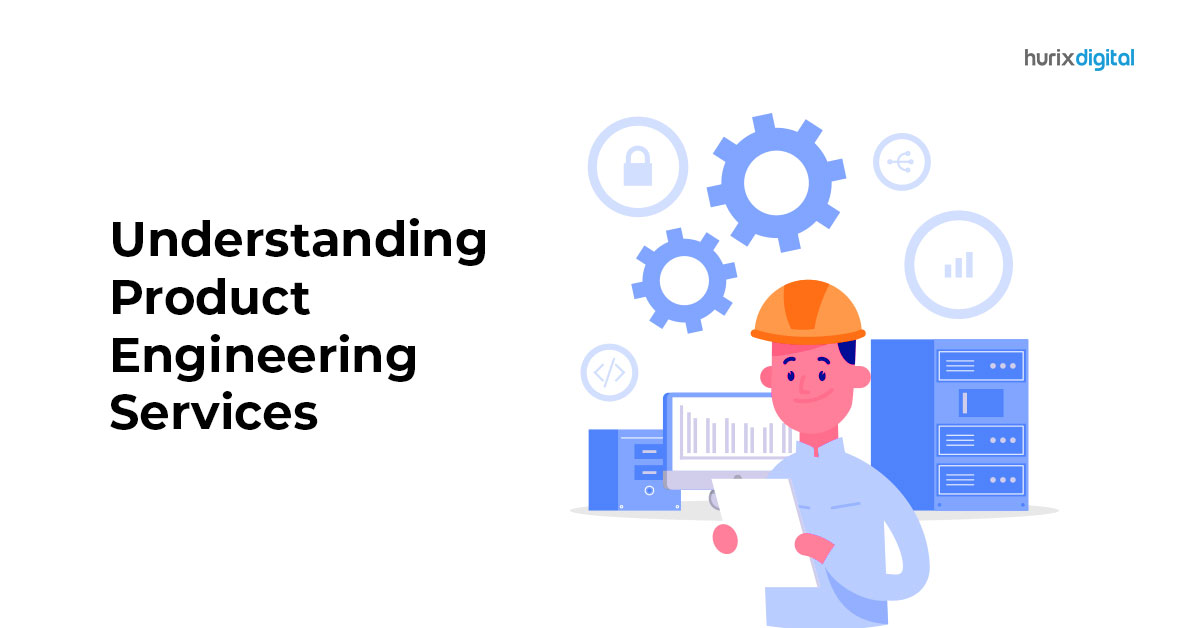A Comprehensive Guide on Understanding Product Engineering Services
Modern-day customers are always looking for products with the latest features and augmented functionalities, and businesses are expected to cater to their ever-changing demands and expectations. To stay relevant and successful, businesses push for cutting-edge innovations, superior quality, and improved functionalities to fulfill customers’ expectations.
The need to constantly innovate and create products with better features has led to the development of product engineering services. These services are dedicated to quickly launching innovative and improved products into the market.
The product engineering services industry is fast growing. The global market size for these services was estimated to be $1085.8 billion in 2021 and is projected to rise to $1610.6 billion by 2031.
Table of Contents:
- What is Product Engineering?
- Phases in the Product Engineering Process
- Best Practices in Product Engineering
- Closing Thoughts
What is Product Engineering?
Product engineering is the process of innovating, ideating, designing, developing, and testing a product, device, software, or system that is then produced for sale. Product engineering is an extensive process that deals with quality, performance, production, reliability, serviceability, and other features. These product features are intended to make the resulting product more attractive to its targeted audience.
Product engineering entails the entire product life cycle, from the innovation phase to the production and user acceptance testing phase. Product engineering services aim to create new products designed to appeal to changing customer preferences and evolving societal trends.
It is not an easy task, as every product must be prototyped and pass through multiple quality testing rounds. As such, the importance of product engineering services cannot be understated.
Phases in the Product Engineering Process
There are different phases in the product engineering process. It mainly consists of the following steps.
1. The conception of the idea
This is the first stage wherein the idea for a specific product is conceived. It is then described in terms of its specifications and requirements. The idea is then analyzed to check whether it is feasible and worth pursuing. Not every idea that seems exciting in the beginning might be commercially viable.
2. Design
Once an idea has been finalized, the next step is to start designing it so that it can be converted into a commercially viable product. Engineering designs are created keeping in mind the hardware, software, and industrial design specifications. Improvements and changes are made in this phase to create the final product design.
3. Development
The next step is to bring the product idea to physical existence. This is a very significant phase of the product engineering services process. This step includes mechanical computer-aided design (CAD), printed circuit board (PCB) design, system software development, and other processes. The modifications made at the designing stage are also implemented in this phase.
4. Prototyping
A prototype is an early sample of a product intended to be produced on a large scale for commercial consumption. Prototypes help test and validate several features envisioned in the earlier phases of product engineering. They are deployed in controlled environments where they are monitored and analyzed. The prototypes are checked for compliance with quality and environmental standards.
5. Production
Once the prototype has been approved and accepted, the product is deemed ready for production. The product engineering services process includes production support to ensure the seamless production and effective release of the final product.
6. Product Lifecycle Management (PLM)
PLM is an important part of any business that deals in physical products. The company has to stay competitive by continuously enhancing the products they supply to the market. PLM helps in the timely enhancement of the concerned products and is also involved in obsolescence management. Periodic enhancements and updates are mandatory to keep the products relevant in the market.
Also Read: What is the difference between Prototype and MVP?
Best Practices in Product Engineering
To provide value to your clients, it is mandatory to implement certain best practices in product engineering. Here are a few practices every business must follow:
1. Focus on aspects that matter
Instead of focusing on adding more and more features to your products, figure out what matters to the customers and work on implementing these.
2. Define clear goals
Defining clear goals is an essential part of product engineering services. Define the target market and set clear, measurable product goals. If the goals are well-defined, the company can prioritize them and effectively allocate resources to achieve them.
3. Focus on continuous re-engineering
Successful companies focus on the continuous re-engineering of their products. Customer preferences are ever-changing, and only those businesses that constantly improve can stay relevant and profitable in the competitive market.
4. Foster a culture of collaboration
Effective product engineering entails collaboration and communication at every stage of the process. Teams often comprise diverse skill sets, so there must be effective and clear communication between the team members so that everyone’s effort is aligned with the group objective.
5. Use agile methodologies
Agile methodologies involve breaking down a project into phases and focusing on cross-functional collaboration. These methodologies promote quick and flexible product development and allow marketing teams to rapidly improvise product designs based on feedback from the target audience. Businesses should use agile methodologies for rapid designing, prototyping, testing, and product development.
Closing Thoughts
Product engineering services play a significant role in helping businesses launch products that are not only relevant and functional but also appeal to the ever-changing societal trends and customer demands. Companies may face multiple challenges in product engineering services if they attempt to do everything with in-house teams.
Working with experienced product engineering services providers can go a long way in assuring that your business can launch successful products in quick succession while dealing with any challenges effortlessly.
Hurix Digital has been a leader in the product engineering services industry for over two decades and has helped countless IT businesses and educational institutions achieve their product engineering goals.
Get in touch with our experts today.

SVP & Head – Hurix Technology Solutions
Global Delivery head with 25 years of working experience in NYC investment banks and fintech companies. Hands-on technology delivery management and program management, accountable for stakeholder relationships, Strategic roadmap, P&L, Revenue growth, Account Management, and employee satisfaction.









